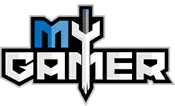Hip Games’ obscure Special Forces series has finally made its way into the elite 128-bit generation, but would probably have faired better if left at basic training. Still, with a name like Special Forces: Nemesis Strike – which beat out the even worse moniker CT Special Forces: Fire For Effect – and a $19.99USD price point at launch, savvy gamers aren’t likely to pick the game up mistaking it for the next [I}Splinter Cell. Ultimately, Nemesis Strike is a relatively acceptable pick for its price range, but pales in comparison to the affordable selection of the Xbox’s Platinum Hits series.
This particular installment of the third-person shooter places the player in the roles of anti-terrorist soldiers Raptor and Stealth Owl as they combat the forces of evil in the form of the dreaded Nemesis terrorist network. That short description just about sums up the events of the entire game, as there is no real connected storyline to spur the player along the game’s seemingly random missions. Raptor and Owl pack unique edges in battle, playing off of the versatile battery meter that affects each playable character in different ways. When playing as the Ramboesque Raptor, the meter acts as a shield that can be recharged at battery terminals all over each level – similar to how the Half-Life series uses the mechanic. For Stealth Owl, who – surprise – favors stealth over overt combat, the meter is consumed by his various vision modes like night vision, sonar, and thermal, as well as the crucial stealth camouflage. The sporadic placement of the battery stations adds a slight strategic aspect to the game but, for the most part, there’s always a recharging terminal close at hand.
Nemesis Strike offers a surprising amount of interesting ideas and wrinkles to the established third-person shooter genre, but ultimately its efforts are wasted due to poor execution. The dual protagonist setup is one such notable implementation. Playing as Raptor while infiltrating and clearing an area of enemies, then switching to Owl in the next mission for a more delicate approach is a great idea – especially as players will grasp a feel for the mission map before tacking it from a stealth angle. This also works in reverse, with Owl performing some recon on a new territory before unleashing Raptor on the terrorists. Alternating player characters this way is the best thing Nemesis Strike accomplishes, although the player’s character is dictated by the mission and isn’t selectable. Still, for the most part, the game’s player assignments are well handled.
Unfortunately, the occasionally inspired gameplay mechanic is spoiled by the mangled presentation of the basics. The adequate, if drab, graphics (running at a solid 60fps) are hard to see most of the time since the player’s character takes up a large amount of the screen space, and with barely any camera manipulation available it becomes quite the nuisance. Switching into the auxiliary first-person mode doesn’t help much, either, as its awkward handling and slow movement make it more appropriate for precision aiming than running through the levels.
Another attempt at innovation occurs through the cover mechanic, where your player can take refuge behind a wall, crate, desk, or any other sizable object. As in kill.switch, you can either duck out from behind cover to fire or shoot blindly, the trade-off being less accuracy in favor of more protection. However, the unstable aiming and speed of the crosshairs hinders this mechanic, and with no option to adjust the reticule speed for either axis, it quickly becomes a moderate hindrance.
Among the bevy of familiar-looking rifles, rocket launchers and pistols are a pair of interesting grenades with a healthy dose of (underused) potential. The basic idea is that you toss one into a room and, depending on the polarity of the selected grenade, all metal objects within a limited radius either get sucked in to its core or go flying outward. Sadly, these tactical tools are used in mostly obvious manners, like sucking weapons from enemies’ hands or clearing the occasional barricade constructed from metallic objects. More pointedly, as gameplay elements they’re never fully or convincingly implemented into the structure of any level.
Freefall mode is yet another new game mechanic introduced by Nemesis Strike. Before missions with Stealth Owl, the player must penetrate enemy territory via parachute drop (curiously, Raptor has no problem driving up to the target), while dealing with enemy threats and a somewhat contrived time limit. This new mode is probably the game’s most successfully implemented and original concept, yet still it seems a little off balance as its mini-game feel paints it as a distraction instead of a true game component. Losing the time limit, extending the length of the airdrops and letting the player take control of Owl’s fall instead of rushing to hit the deadline would have considerably boosted the appeal of the mode.
The few instances of originality that Nemesis Strike attempts to bring to the table notwithstanding, the rest of the game’s efforts reek of poorly executed derivative imitation. The vehicles, ranging from jeeps to a hovercraft, appear as central components in missions and also in random areas, but their irregular control and spastic steering mainly serve to make you appreciate how well Halo handled the problem. The A.I. is equal parts dumb and brilliant, as zooming in on enemies in first-person mode and gunning down a cluster of foes prompts confused reactions from the survivors, lending the player an odd sense of invulnerability. In one encounter, when firing on a cluster of three enemies standing quite close together, it was possible to cleanly nail the first two in the head while the third remained motionless with no noticeable reaction. Rocket-wielding foes will also frequently blow themselves to pieces in bizarre displays of suicidal desires made manifest. Also, your occasional A.I. buddies will encounter severe problems navigating the environment, often getting hung up on turns, corners and, actually, pretty much anything. Yet, even while using Owl’s stealth mode, enemy soldiers possess the uncanny ability to sense him despite his not being visible – practically wrecking any attempt of playing the game in a truly stealthy manner.
It’s mostly downhill from there. Sound effect glitches, endless enemy spawning and strange enemy placement, repetitive enemy types, and the always-entertaining getting-shot-at-through-walls feature inflict quite a degree of damage on Nemesis Strike’s other more noble attempts. There are a sizable amount of unlockable rewards for good performance in various missions, but the exact requirements needed to boost Silver status to Gold is shrouded in a mysterious system that translates level stats – such as headshots and time elapsed – into points, with no clue or indication of how the points are tallied. Unlockables include concept art, weapon and character descriptions, and more insight into the story?if you’re into that kind of thing. The single-player mode is the only one offered, with no Xbox Live, death-match, co-op, or any attraction for more than one person.
With so many superior contenders already fighting for pride of place in the bargain bin, there doesn’t seem to be a good reason why someone would buy Nemesis Strike over Brute Force, Hitman 2, or any other like-priced shooter. After all the bodies have long hit the floor, Nemesis Strike tries to accomplish more than it can handle. Maybe with some refocusing and extra time it could have been a more formidable soldier in the war for your cash but, for now, it’s back to base for Nemesis Strike.
President & CEO














Leave a Reply